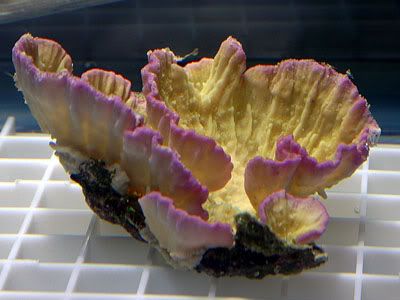Montipora
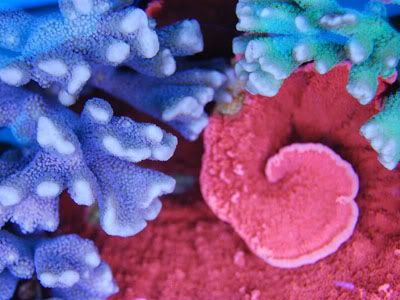
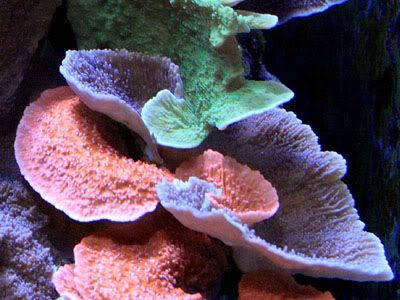
Family:
Acroporidae
Genus:
Montipora
Common Species:
M. capricornus, M. crassituberculata, M. danai, M. digitata, M. foliosa, M. patula, M. spongodes, M. spumosa, M. stellata, M. tuberculosa, M. verrucosa, and others
Common Names:
Velvet Coral, Velvet Finger Coral, Velvet Branch Coral
Notes:
Considered to be a good beginners coral.
Adaptable to many light and current levels.
Excellent for propagation.
Montipora Growth
This type of coral grows outward and can harmlessly spread over surrounding rocks, debris and shells. Montipora ranges widely in color including pink, brown and green. Some montipora has bright colors and differing color ranges over its ridges offering a contrast with the base of the coral. When properly taken care of, even small, two to three inch ridges of montipora can grow into basketball size corals. Montipora can be found in many famous natural coral reefs including many of the reefs off the islands of Hawaii, including Kaneohe Bay, Oahu and the Northern Hawaiian Islands.
Montipora Colonies
As most corals, montipora is composed of colonies of individual polyps that share a common center called a nerve net. The colonies are typically about two mm across and share tissue. When left alone, the polyps will expand and protrude in water movement, but when disrupted they will retreat into the coral. In the evenings, they are known to branch out and collect zooplankton from the water. A proper environment for photosynthesis is critical for montipora - the coral has a symbiotic algae called zooxanthella that inhabits the coral cells and produces energy. The process of photosynthesis is the main element that produces the important energy to make the zooxanthella.
Montipora Ideal Environment
Montipora are usually found in bright sunny shallow reef environments that have moderate wave motion. Some fish, like hawkfish, live in or near the montipora colonies. Hawkfish are narrow long fish that make their homes among the montipora ridges. Unfortunately, the existence of montipora is dwindling. This type of coral is not resistant to coral bleaching as other coral species, like Acropora. Coral bleaching occurs when the photosynthesis process is not occurring enough to provide the energy to the coral which gives them their color.
Montipora Stressors
Montipora is also not as resistant to other stresses like changes in water temperature or water chemistry. With coral bleaching, once the process starts it is difficult to stop the process. If the montipora colony lives, it can take months for it to regain its normal density. In a reef aquarium, improper lighting can cause coral bleaching to occur and kill the montipora.
Montipora Lighting
Montipora corals respond well to metal halide lighting. This type of lighting is compact and powerful which is good for reef aquariums. In a well light and properly maintained reef aquarium, montipora can grow large, healthy and beautiful.
Montipora Care
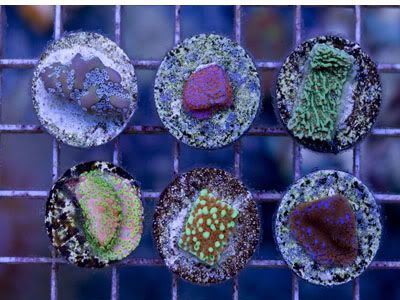
Montiporas are a family of live corals that come in a variety of colors, shapes and sizes. They are delicate and peaceful creatures that can do very well in a home reef aquarium tank. However, they can be moderately difficult to take care of without the proper equipment and environment in your aquarium tank.
Montipora Care & Placement
First, placement of the corals needs to be considered. Some montiporas will grow rather large, or they have branch-like features like the montipora digita, which will need space to grow vertically. Plated and encrusted montiporas will need room to grow wide, like the Montipora capricornis varieties which are narrow at the bottom but grow tall and wide. Other types of montiporas like the superman, orange and sunset varieties can grow pretty large, too, under the right conditions and you want to make sure the corals are not touching each other or crowded by other corals.
Montipora Care, Water Conditions
Water movement and flow are very important for montipora health and growth. In nature, most montiporas are found in shallow, lagoon-like environments. Their normal water flow is usually rather turbid from constant flow and movement from waves breaking near the top. To simulate this movement, there are a number of water pump options. Most tanks use an overflow system. In this system, water is drained in a sump and then is pushed back into the tank. Multiple power heads also work; they are submerged into the water and pump the water in and out. Other options are propeller pumps and gyre tanks. Many of the newer aquarium tanks come with a water movement system installed or pre-drilled holes for the proper pumps.
Montipora Care, Temperatures
Aquarium tanks need to be heated properly, as well. Montiporas thrive in water temperatures between 72 and 78 degrees and no warmer than 80 degrees Fahrenheit.
Montipora Care, Lighting
Proper lighting is probably the most important factor in montipora care. The process of photosynthesis is critical to live coral's existence. In nature since montiporas traditionally are in more shallow water, they have great access to sunlight. Sunlight is what keeps the production of zooxanthella steady - zooxanthella is an algae that corals use as food. It is only produced through light, water and oxygen. Most montiporas need medium light, but some need high light. Many lighting options are available - fluorescents, metal halide light and LEDs. Studies have shown that montiporas do well under all types of lights. In some cases, for instance with the superman montipora, the coral's color is brighter when metal halide light is used in the tanks. Be sure to place your tank near electrical outlets so you can plug in your lights, heaters and pumps.
Montipora Care, Additives
All montiporas also benefit from added chemical supplements to the tank water. Calcium, which improves the coral's skeletons, should be added and tested appropriately, along with other trace elements and strontium. Regarding diet, all montiporas need a weekly feed of micro-plankton
For detailed information about individual species see links below:
Montipora Capricornis
Montipora Confusa
Montipora Danae
Montipora Digitata
Montipora Foliosa
Montipora Undata
Montipora Nudibranch
Many corals are now sold on the market as frags, or parts of coral that can be stimulated and grown to full size in reef aquarium tanks. However, with the popularity of frags and their common usage, they unfortunately carry coral eating pests that can invade your aquarium tanks.
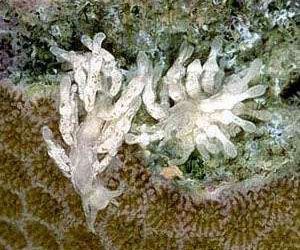
Montipora Nudibranch a Predator
One of the main culprits is the nudibranch which mostly preys on montipora coral. They are sometimes hard to detect and can be seen when the tank lights are off for awhile. They can be 2 to 3 cm in height and attach themselves to montipora coral, which makes them hard to spot. Nudibranches tend to become almost a camouflage on the coral taking on the appearance of the montipora, or any other coral they might be preying on. Over time, if nudibranches are not removed from the tank successfully, they can discolor the corals and slowly eat all of the coral's tissue.
Montipora Nudibranch Favorite Meal
Montipora, small polyp stony (SPS) coral are a favorite of the nudibranches. They also like Anacropora coral. Appearing almost transparent or pale to tan, they have branches on their backs. These pests multiply very quickly if not removed from the tank. Usually, reef aquarium owners will notice discoloration on their corals. This discoloration can be especially noticeable in the montipora capricornis, known as the vase corals, because its ridges are wide and easy to assess for discoloration. Though, unfortunately, some nudibranches are not caught until they appear at the top of the colonies after doing extensive damage to the base of corals.
Montipora Nudibranch Treatment
Fortunately, there are a few effective treatment options. Often, reef tank aquarium owners will remove the nudibranches from the montiporas and other corals with tweezers. But, there are natural predators and chemical options that also work.
Montipora Nudibranch Steps to Take
When the nudibranches are spotted, the tank owner may decide to introduce a natural predator to the tank to eat the nudibranches. Some of the natural predators that could be used are the butterflyfish (Chaetodon genus) and Thalassoma and Coris (wrasse of genus.) The most effective butterfly fish are the Red Sea Butterfly (Chaetodon semilarvatus) and the Thread Fin Butterfly (Chaetodon auriga.) Keep in mind these natural predators also eat worms and feather dusters that may live in the sand of your aquarium.
Montipora Nudibranch Chemical Warfare
Using a chemical treatment, like an iodine dip and concentrated Lugol's, may also be effective in ridding nudibranches from your montipora coral. However, users of this method have found that while the mix may kill the nudibranches, it doesn't get rid of all the eggs. Basically, it will only kill the active nudibranches on the corals. Some reef aquarium owners took out the affected montipora and ancropora corals and treated them in a separate tank for several months with the iodine dip and then reintroduced them to the tank.
To avoid a nudibranch outbreak, be careful about where you buy frags and be sure to properly quarantine your livestock before introducing them into the reef aquarium tank.
The Different Varieties of Montipora
Blue Digi
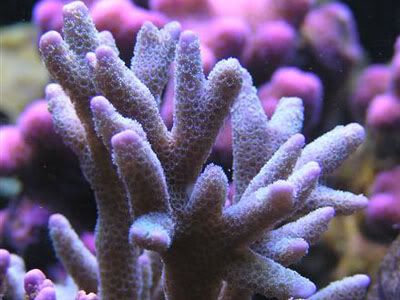
Forest Fire Digi
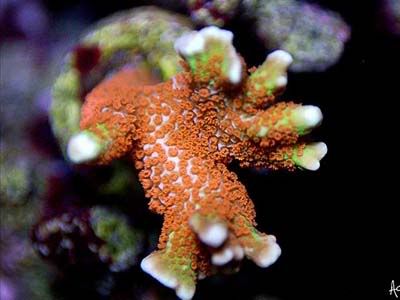
Orange Digi
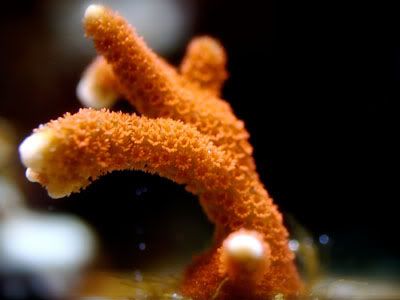
Pink Smoothie Digi
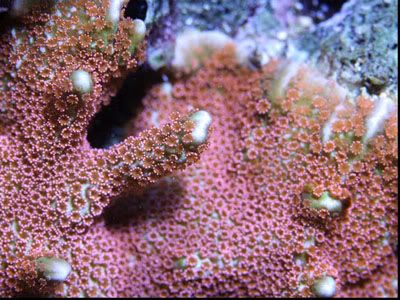
Green Digi
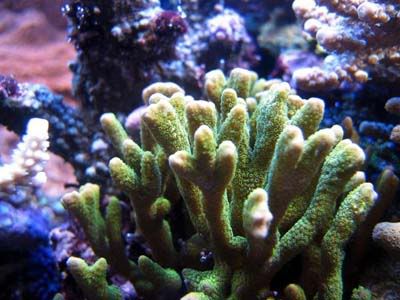
Red Digi
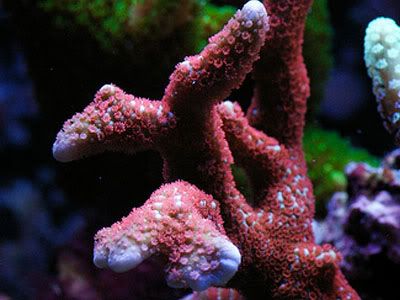
Superman Digi
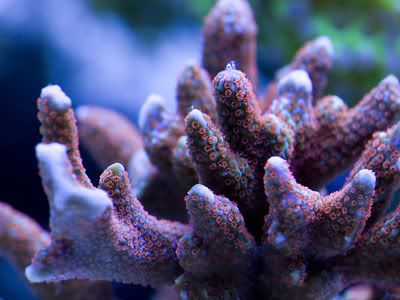
Chili Pepper Monti
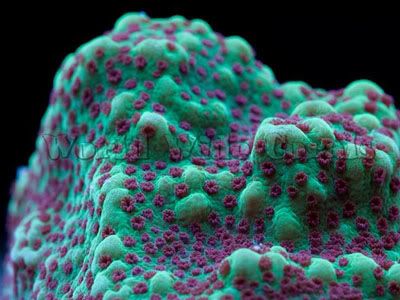
Hawaiian Punch
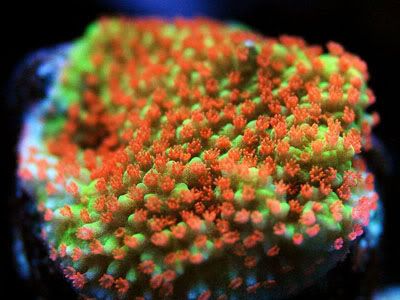
Idaho Grape

Meteorshower
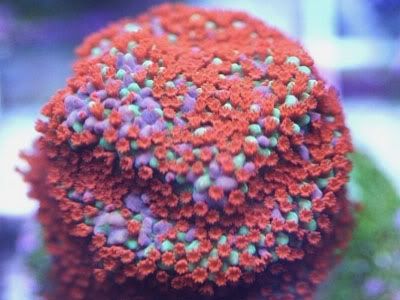
Northern Lights

Orange Setosa
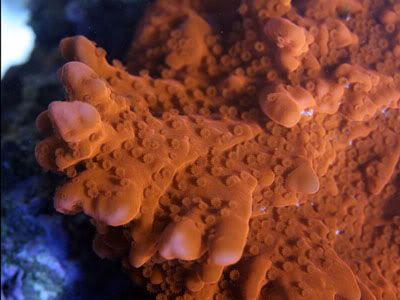
Pink Encrusting

Rainbow
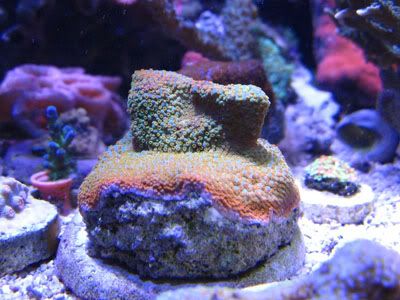
Pink Sand Dollar - Montipora venosa
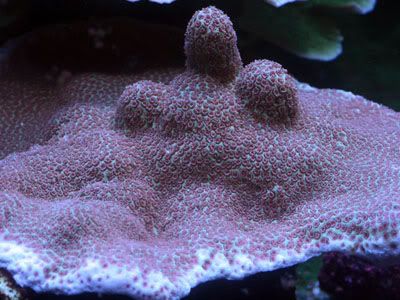
Pokerstar
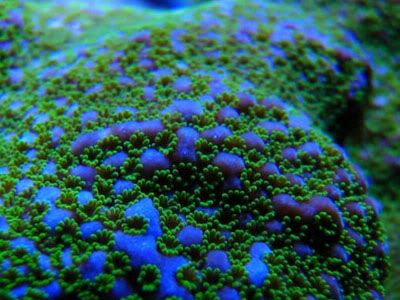
Purple Haze
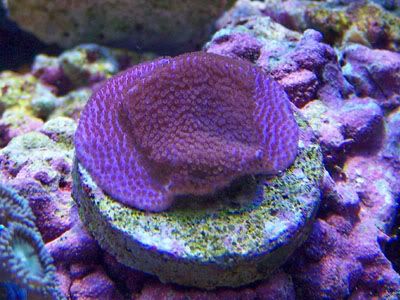
Purple Shamrock
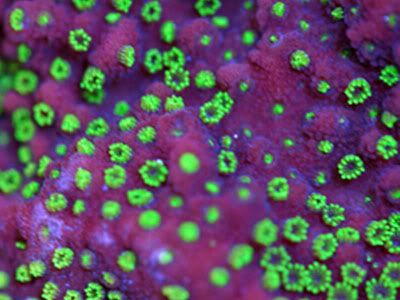
Superman (Danae)
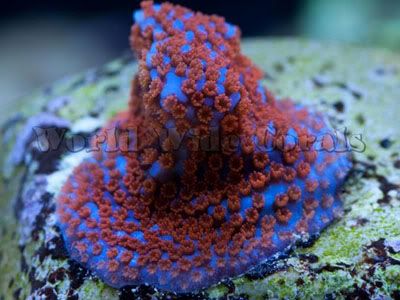
Reverse Superman (or Mystic)
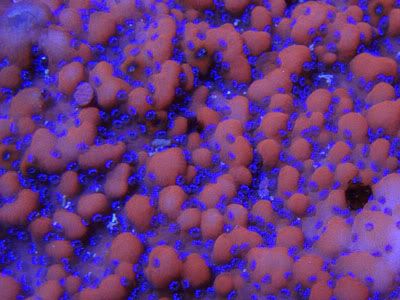
Sunset
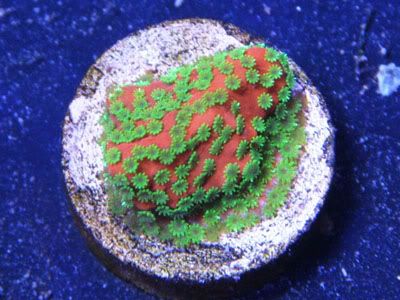
Sunset Imposter
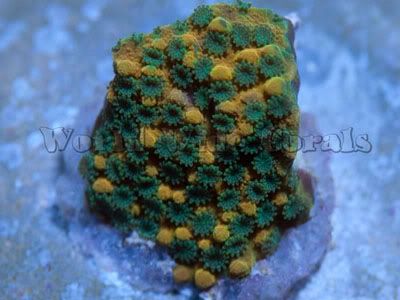
True Undata
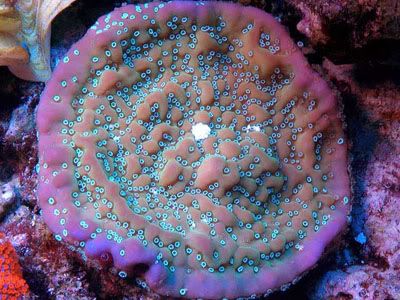
Spongodes
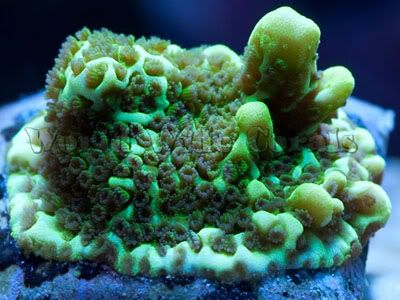
Flowerpedal Cap
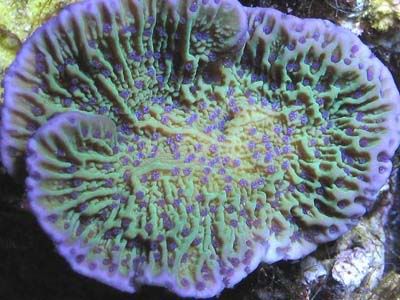
Green Purple Rim Cap
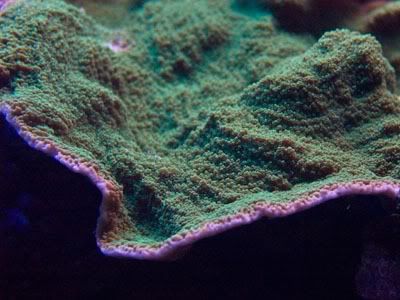
Green Cap
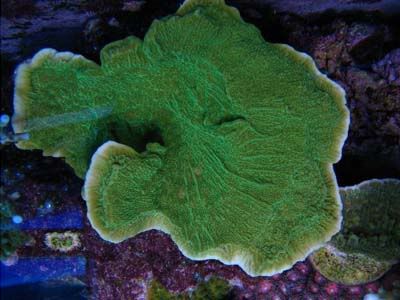
Red Cap
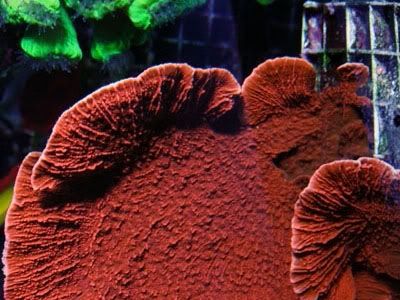
Strawberry Patch

Pink Cap
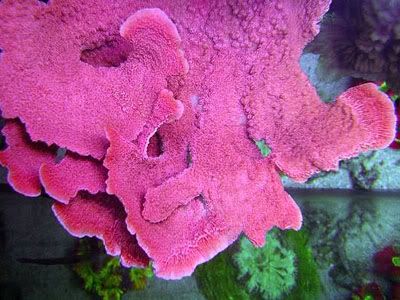
Unknown Name 1
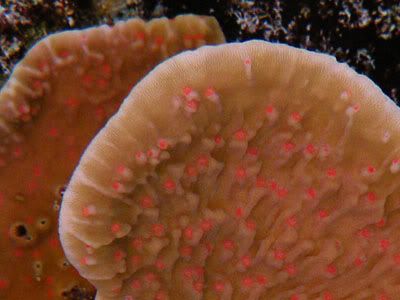
Unknown Name 2
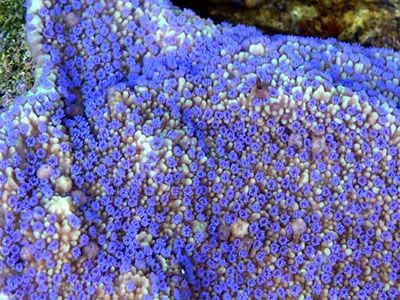
Unknown Name 3
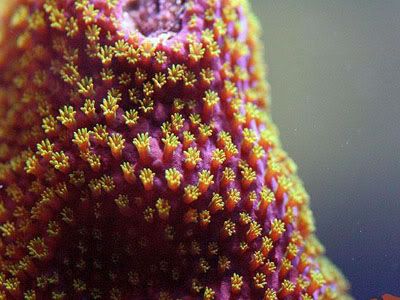
Unknown Name 4
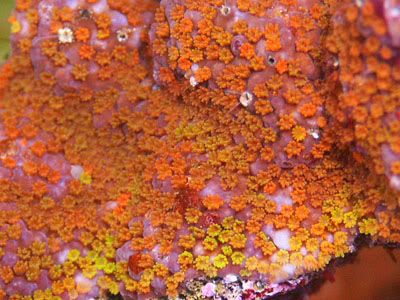
Unknown Name 5
